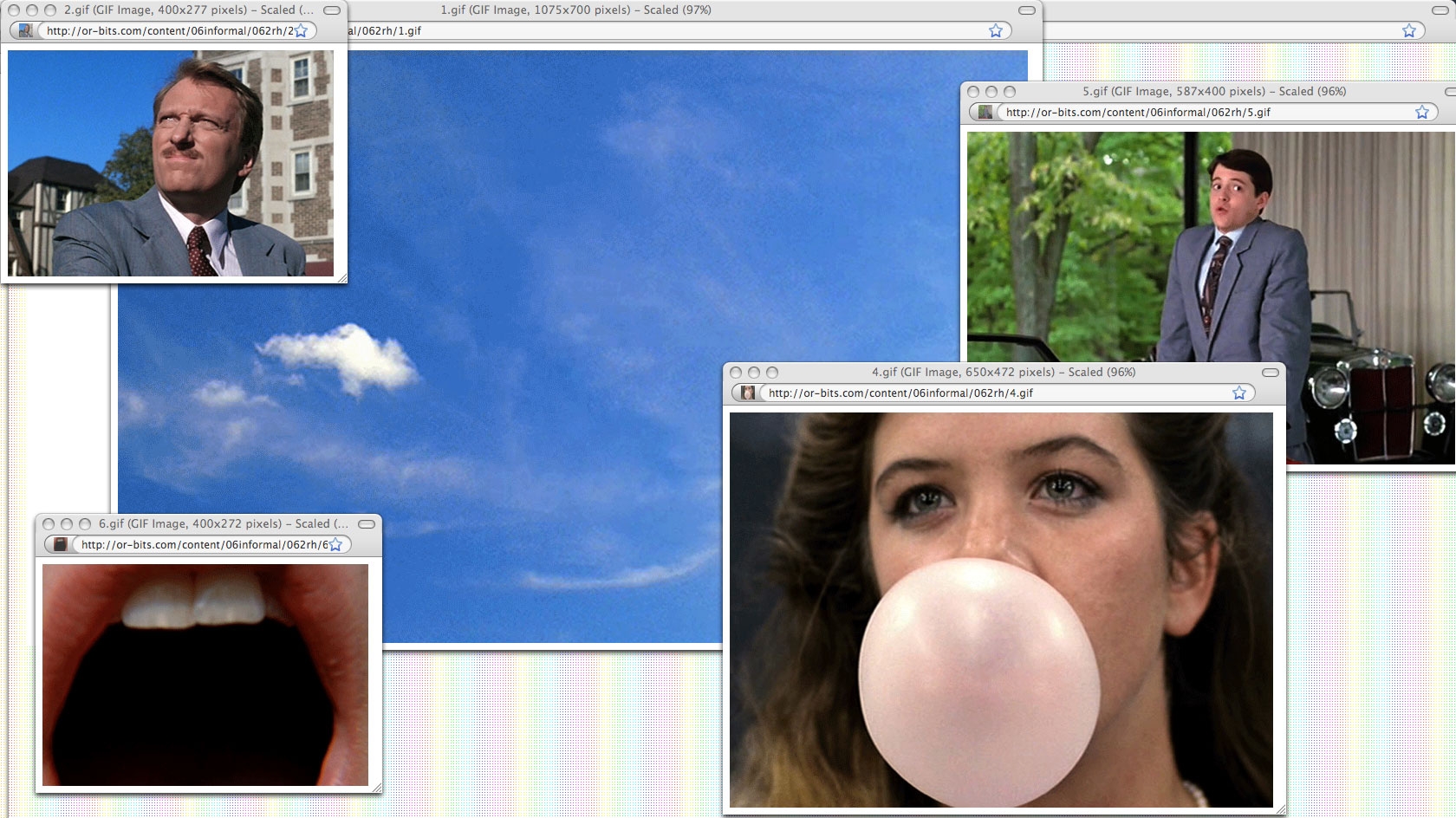I’m looking at exhibition images on the website of an artist-run space in the east of England – and considering it a stop on this route around the UK. The work looks good, but it’s hard to be sure from the small jpegs that document it. I start to think about that oft-quoted line from Buckminster Fuller – ‘The most important part about tomorrow is not the technology or the automation, but that man is going to come into entirely new relationships with his fellow men’ – in relation to this website and my use of it. I realise I’m taking it out of context, but I begin to think that Bucky might not be 100 percent correct in his assertion: perhaps the mechanisms that lie behind these new relationships are important after all, and perhaps using as advanced a tool as a website for mere documentary and directory purposes (which the media proves not much cop at) is doing the technology a disservice. The breakdown in the lines of communication between the offline and online realms (that is to say, the works and their digital documentation) that I’m experiencing has stemmed precisely from a lack of consideration of the technology. So instead, for this month’s stop on the roadtrip, I’ll put away the car keys and stick with the laptop (you can, if you wish, envisage me using the complimentary Wi-Fi at a roadside inn).
Marialaura Ghidini is a Newcastle-based curator and academic who, in 2009, set up or-bits.com after experiencing frustrations similar to those detailed above. The website, acting as a curatorial platform, has so far staged six online exhibitions, commissioning artists to produce new work specifically for the web. “There was a lack of curatorial endeavours on the web,” Ghidini explains. “Yet the web browser is directly concerned with methods of arranging and displaying different media in the same space. It is an inherently curatorial medium.” Her exhibitions are an antithesis of the indexes of imagery that make up most art-related websites; here works utilise the multimedia possibilities and infinite variations in design architecture that the context offers. Dun-Coloured Veil (Reel 10) (2009), produced by Ed Atkins for the first exhibition, Superposition (2009), and consisting of an addictive scripted narrative (about an attempt to photograph a ghost), is navigated by a horizontal scrollbar and accompanied by a haunting, minimal electronic composition, for example. The same show included Thea Stallwood’s Here and There (2009), webcam footage which, when the server is refreshed, proves to be a prerecorded minidrama only masquerading as live streamed event; and Harun Morrison’s textwork Every Hundred Steps (2009), which is based on a walking performance acted out by the artist. In more recent exhibitions, Jamie George made use of one of those zoom features common in online clothing stores, which here allowed the viewer to explore the contours of a yellow bedsheet; and for Informal, the latest show, cocurated by Gil Leung, Richard Healy’s excellent Leisure Rules (2012) plays out in a cascade of pop- up windows, all looping gif-file clips from Ferris Bueller’s Day Off (1986). So while each show addresses a certain theme (complete with contextual mini-essay), the most successful works within them tend to have an online site- specificity.
Or-bits.com purposely programmes artists who would not consider themselves primarily digital, ‘new media’ or web-based practitioners, and they are encouraged to stay within the primary concerns of their given practice. “It’s very exciting to work with an artist on creating a work that tries to address sculptural concerns, but online,” Ghidini says by way of example. This outlook is in recognition of the pervasive influence the Internet has had on art practice (and life) generally. “The online realm is not the radical space it was in, let’s say, the 90s… It now has a more complex relationship with the offline dimension, impacting our patterns of communication, production and display.” So while the mechanics of the work on or-bits.com are site-specific, the Web as a cultural realm can’t be considered to be disconnected or discrete from the offline world. The slippage of language and methodologies between the two means that even when one is working (or producing artwork) offline, the influence of all those hours spent online is never far away (cf. the minor stir a couple of years back, when the pathologist Bruce Friedman anecdotally noted that, because of his online habits, his brain had lost its capacity for long bouts of concentration: ‘I can’t read War and Peace anymore,’ he wrote).
It’s something the or-bits.com enterprise programmatically investigates by extending its remit into physical exhibitions, previously at JT Gallery and the Quare project space in London. Here the artists who have exhibited online (and whose output will remain there as long as the website is maintained) make work for finite exhibitions back in the offline realm. Or-bits.com, by way of laudable curatorial investigation, has achieved a reversal in that original, problematic relationship between the offline art space and its website: the material output now seems a supportive concern to the gallery’s primary online raison d’être.
